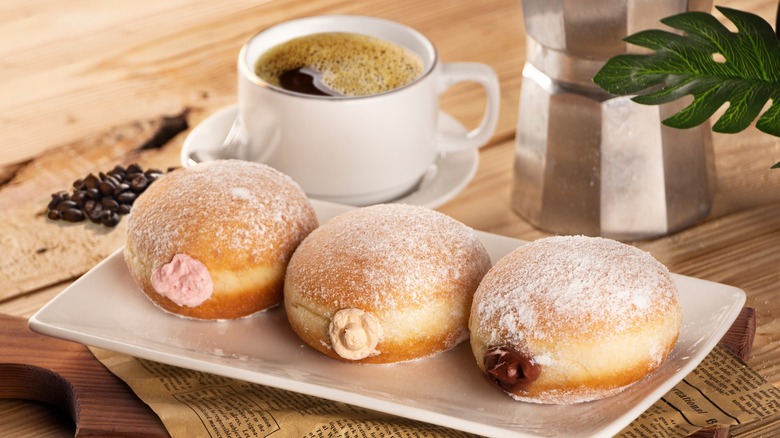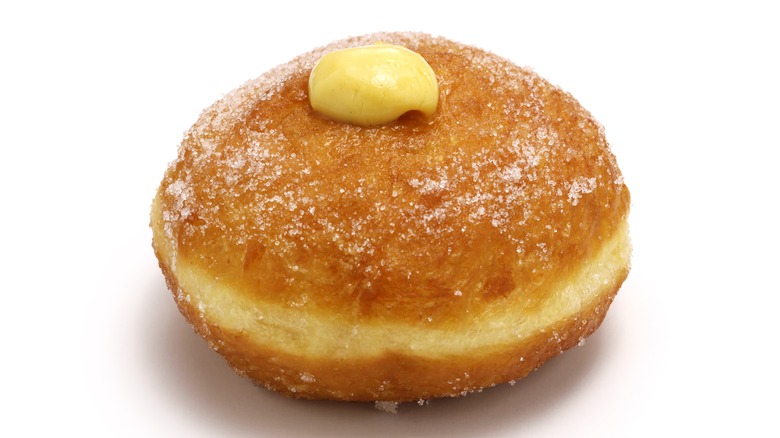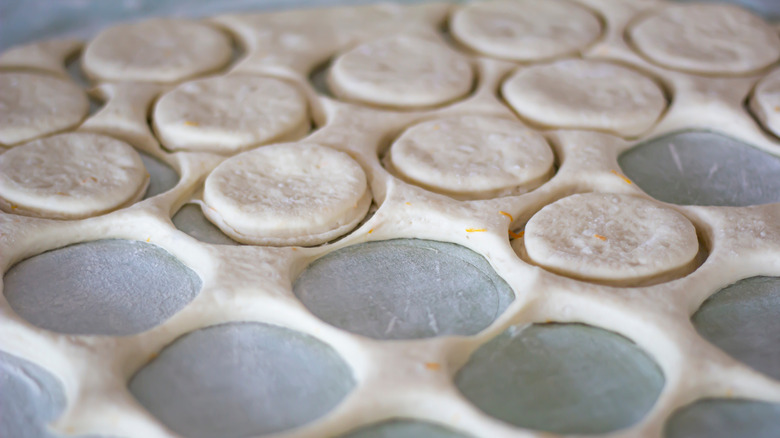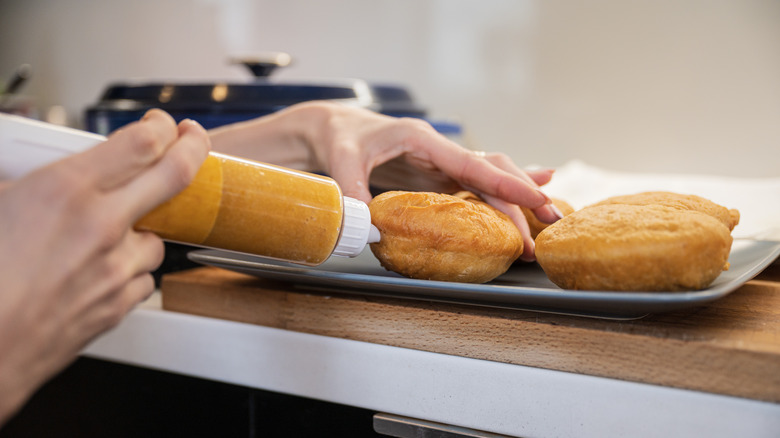What Makes Italian Bomboloni Donuts Unique?
Mankind clearly has an affinity for deep-fried dough doused in sugar, otherwise known as donuts. If they didn't, there wouldn't be Italian zeppole, French beignets, Polish paczkis, and Mexican churros. Around the world treats like these are usually affordable snacks or breakfast items beloved by children and adults with a sweet tooth. The reason for this may be wired into our brains, as it turns out. According to Science Alert, eating sugar releases the chemical Dopamine which tells the brain that an experience was good. And when something is good, people are likely to remember and repeat it. And let's not forget the incredible sensation of biting into a still-warm-from-the-fryer glazed donut. There are few food experiences more gratifying than that.
Americans are most familiar with the classics offered everywhere from the big chain companies like Dunkin Donuts and Krispy Kreme to the local gas station, like glazed, old-fashioned, chocolate cake, and sprinkled. But if there is a type of fried pastry that could give any of these a run for their money, it might be the Italian bombolone, which you are not likely to find alongside the aforementioned donut varieties in any run-of-the-mill donut shop. It may look like a donut, but don't dare call it one.
What are bomboloni?
According to La Cucina Italiana, bomboloni (plural for the singular bomboline) are small, round pastries that are fried in oil, rolled in sugar, and filled with various fillings like custards, creams, Nutella, or jam. They resemble an American jelly donut, however, a finished bomboloni includes a bit of the filling spilling outside the dough so that the customer can see what it's filled with, per The Spruce Eats. La Cucina Italiana suggests that the confection has its origins in both Tuscany and northern Italian regions.
In northern Italy, bomboloni are said to have been influenced by the Austrian pastry called "krapfen," which are fried donuts filled with jam. Today, bomboloni, which take their name from the Italian word "bomba" meaning "bomb," are enjoyed all over the country, mostly in the morning, but really any time of day or night in cafes, according to Culture Trip. Italians tend to keep breakfast a light affair, but a strong coffee and a bomboline certainly don't equate to something boring.
How are bomboloni different from donuts?
In New York City there are several bakeries that specialize in this treat, which makes sense due to the city's strong Italian influence, and the pastry chefs who make them here believe bomboloni is in a different class than American donuts. At La Cucina Italiana, pastry chef Fabio Mussi explains that while donuts are mass-produced every day and "industrial" in that sense, bomboloni take time and patience, making it more of a specialty item. Ingredients like flour, yeast, sugar, butter, eggs, and baking powder are used to make the dough, but some bakeries take it to the next level by insisting upon imported Italian flour or flavoring their dough with citrus.
Unlike donuts, bomboloni dough must rise for a very long time before it is baked in order to achieve the soft, pillowy texture the pastry is renowned for. For the most part, they are cooked in hot oil but occasionally are baked in the oven. When they are still warm, they are never glazed, but rolled in sugar before being rested and finally filled.
Any bomboloni recipe that includes eggs takes its cue from the Austrian-style bomboloni because, in Tuscany, no eggs are used in the dough, per La Cucina Italiana. Blog My Travel in Tuscany explains that Tuscan bomboloni dough is also soft and thin, uses less butter, and is fried at a lower temperature which makes the pastry less dense. It's also mentioned that the original Tuscan bomboloni does not contain a filling.
How are bomboloni made?
The Spruce Eats gives a recipe version of bomboloni that is probably a bit more friendly to busy individuals as the rising time is brief compared to some professional recipes. It suggests combining flour, yeast, sugar, and salt in a mixer. Eggs, milk, butter, and vanilla are added and the mixture is gently stirred. The dough should then be kneaded until it is smooth but still slightly sticky. At this point, the dough needs to rest, so it's transferred to a lightly oiled bowl, covered, and placed in a warm spot until the dough has doubled in size. The risen dough is then rolled and cut out in circles. The individual circles are then covered and rested for about an hour.
To cook, turn on your fryer or heat your oil to frying temperature. The dough circles are fried on each side until golden brown, drained, and then coated in sugar. Now, the fun part. Make a hole just big enough for a piping tip in each fried dough ball. Place your filling in a piping bag and gently squeeze into each bomboloni, letting some spill out.
Bomboloni are best eaten right away when warm and fresh, preferably alongside a hot cappuccino while listening to Italian opera. Buon appetito!



